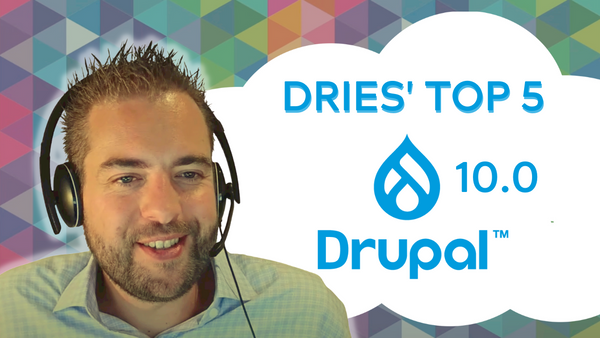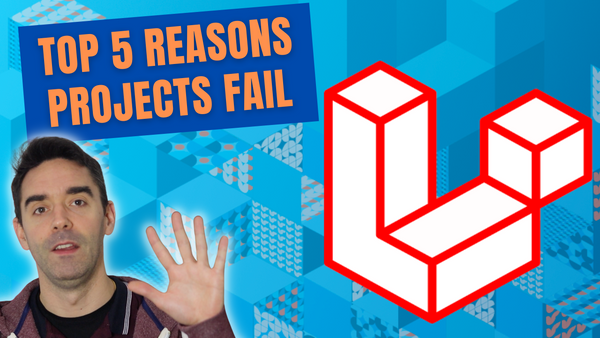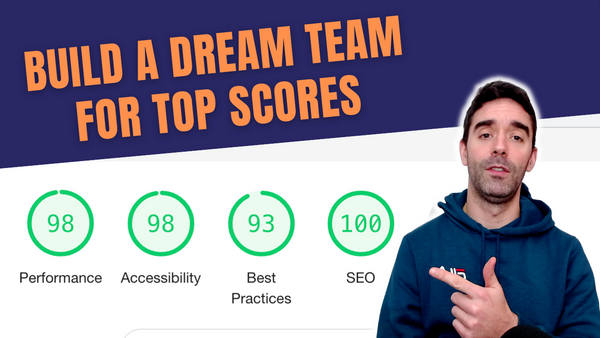The new version of Drupal 10 is coming this December 2022. If you're currently working on Drupal 7 or even Drupal 9, it's time to start planning the updates. Drupal is one of the most enterprise-ready open source content management systems, powering websites like Tesla, Verizon and the Stanford University.
5 major changes coming to Drupal 10
We'll look in this video at the five major changes that this new Drupal 10 version will bring and how you can get ready. It's important that you don't get left behind! As a software engineer or full-stack developer, as you know, you always need to continually improve your digital platform, stay secure, and keep up the performance and accessibility.
This video will hopefully help you stay ahead of the game. Make sure you watch until the end when I'll give you a few tips if you're struggling to convince your boss or marketing manager that they need to invest in the upgrade and avoid running an unsupported and outdated content management system. Let's get to it.
Last year, Dries Buytaert, the founder and lead developer of the Drupal content management system presented a roadmap for Drupal 10 - which was backed by extensive research - and he outlined five strategic goals. Let's go through them one by one.
1. Drupal 10 readiness
As an open source content management, Drupal is using a lot of third-party components from the wider communities, such as Symfony, CKEditor and PHP. Drupal 10 needs to align with the latest version of PHP 8 and Symfony and all those components.
The six-month delay we've seen recently in the release of Drupal 10 is largely down to the need to develop a migration path for the content that was created with the CKEditor plugin from version 4 to 5. This will be a major milestone when this is ready in a few months.
2. Project Browser
This update will bring an easier option to search and install the thousands of third-party modules and add-ons that you can add as an additional feature to your core content management system. At the moment, the developers "just know" the most popular modules and usually have to install them manually... They just know where to look on the main Drupal website.
This new interface will be integrated directly with the admin area and longer term, bring a powerful search engine with categories, and hopefully allow a one-click installation for some of those.
My view is that it's a step in the right direction, but it's not gonna be a magic solution. When you run a large website ecosystem, you will still require technical configuration and a proper release and change management workflow, as well as thorough testing, to make sure that any new module that you install does not break the rest of your website... you just cannot take that risk.
3. Automatic Updates
Drupal's security group is recognized by most of the community as very proactive and efficient when it comes to patching the vulnerabilities to the core framework. However, third-party modules from the community are not their responsibility. Most of those become unmaintained over time and open huge security risks to your website.
The current aim of the automatic update initiative is to apply the Drupal core patches and security only. It's not clear whether that will include security updates or address those modules approved by the Drupal core team. Doing the automatic updates brings a lot of complexity that shouldn't be underestimated, as you have to check after the automatic update to make sure that nothing is broken or that you might need to roll back. Again, a large corporate ecosystem will need a dedicated team to monitor this manually.
4. Easy Out Of The Box
As a content management system, Drupal has a steep learning curve, but it can scale very well to enterprise solutions and deliver global websites better than most other platforms.
We're currently building an academy in my company for training, and even our developers admit that it has a steep learning curve and they struggle to learn it at the beginning when they were junior developers. However, the more they use it, the more complex features they need to build, the more they love it. This easy out-of-the-box initiative aims to smoothen this initial onboarding with a nicer default theme, like Claro for the administrators or Olivero for the administrators. These themes will be more accessible, more performant and easier to use. It will be simpler for developers as well to build custom themes on top of it.
It will bring a lot of SEO benefits as well: the new CKEditor for example will remove the H1 tag - because there should only be one on the page and that will come from the page title in Drupal.
Finally, we'll be able to manage lazy loading for the images directly in the CMS. I think we should all enable that as the default feature everywhere.
5. Decoupled Menu
This final initiative has confused many of my coworkers, but it could have quite a big impact on the new headless trend that is taking the web development community by storm. It will help to provide a more consistent experience for JavaScript developers by reusing existing React components, for example, and the robust Drupal API that we can build on top of other frameworks, without needing a Drupal theme for every website. It started with the navigation element as a proof of concept but will hopefully roll out to contents and maybe forms... we'll see where it goes in future iterations.
Those are the five main changes that we are expecting to come in Drupal 10 with some of them already being available as work in progress or preview in Drupal 9.4 so you can check them out today.
Media library upgrade?
I've not seen many updates about the future upgrade for the media library, where there is some need to clear up the confusion around the media entities, the files, the images, and how it could become more consistent and better work with content moderation. We'll have to see, don't forget to subscribe to follow up for more details when those are released.
How to convince your manager to upgrade to Drupal 10?
Now for the bonus material I promised you - if you're still running on a Drupal 6 or Drupal 7 website, you really need to wake up. Drupal 7 will be end of life in November 2023, just over a year from now. The migration is really painful and you cannot avoid it. If you need your boss to invest into a revamp and the upgrade, there are three main arguments you could use.
- The first one is that you cannot run your Drupal platform, your main digital ecosystem, with security vulnerabilities. No one can take the risk of getting hacked these days. With all the sensitive data you might be hosting on the forms, it might impact your brand reputation... It's just NOT an option.
- Second - More than the technical upgrade, maybe it's time to revamp the frontend of your website, to comply with the latest accessibility guidelines or the SEO requirements to ensure that your website keeps performing.
- Third - You need to think about your editors as well, and give them a modern and accessible content management system that will make their life much easier to manage all the content and the assets for their website.
If this still does not work and you still can't convince your boss or your client that they need to upgrade, reach out and will try to paint a darker scenario to convince them!
That's it for today. I want to say a huge shout out to my colleague Duncan Worrell for his impressive research that inspired this video, and the entire writeup that he did around Drupal 10... so thanks, Duncan!
If you have any questions about Drupal CMS or any other digital transformation project you may be working on, feel free to reach out online on Twitter for example.
I hope you found this useful and if you want to hear more tips like this, just get in touch. Don't forget to subscribe to my YouTube channel and follow me on Twitter to keep learning with me and grow your career in digital.
Until next time, stay safe and see you soon.



